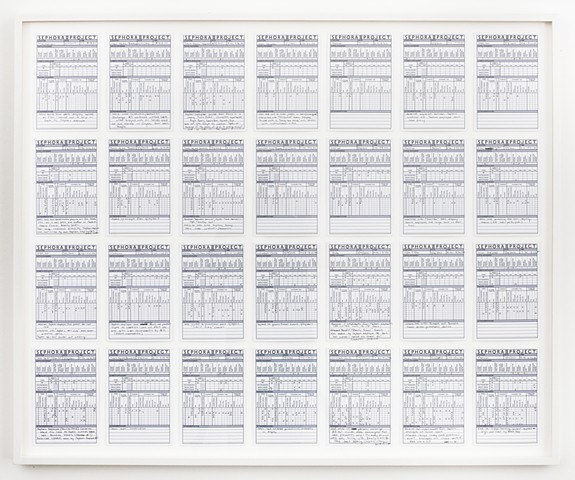Archive
"Hinant created the Sephora Project in which she visited more than two dozen stores in Manhattan. She recorded her shopping experience of each visit, such as her conversation topics with the store employees, and whether free samples were received, in a questionanaire. This project is displayed in three parts, with two of them being questionnaires framed in glass, while the third part serves as a map of Manhattan, utilizing Sephora logos to indicate store locations. Similar to relational art that aims to create a social environment in which people participate in shared activities, the Sephora Project also brings its viewers (especially females) together through their common interest in physical attractiveness and their recognition of a popular brand. But there is also a clear difference between Hinant and her predecessors. Relational artists in the 90s usually created actual events that required people to come together. For example, artist Rikrit Tiravanija cooked Thai food for visitors at 303 Gallery in 1992, where the event itself was a show, and the viewers’ experiences became art. In Sephora Project, however, Hinant places herself as a central hub and connects people into an intangible net, without asking anyone to meet anyone. This is achieved by transforming a general experience (shopping for beauty products) into her own specific experiences in those Sephora stores, which would share some common aspects with almost anyone’s individual experience. And through those non-concurrent encounters with her, the viewers are also related to each other."
–Jin, Meng, “Cindy Hinant at Joe Sheftel Gallery,” The Current Season, November 2012
